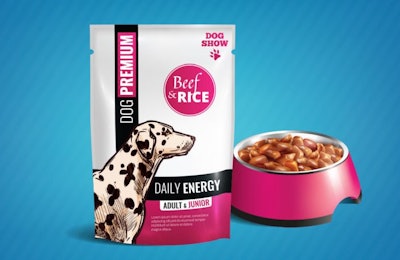
As is likely to be true of any term not used by consumers themselves, the manufacturing-based “private label” classification is prone to muddying the waters when it comes to understanding brand trends in consumer markets.
Within the food industry, the long-time association between “private label” and budget, quasi-generic brands or imitative, lower-cost “me too” brands became archaic as distinct and innovative tiers of private-label products were developed. Driving this trend in food retailing — and toppling the “name brand” vs. “store brand” apple cart — was the revolution whereby Whole Foods, Costco, Trader Joe’s and Aldi become shopper favorites at the expense of traditional supermarkets, and did so primarily or at least partly on the merits of featured store brands. National “name brands” on grocery shelves would generally be thrilled to have the consumer following and value-for-quality reputation of Costco’s Kirkland, or the dash of chic credibility to Whole Foods 365 or Trader Joe’s products.
“Store brands” in language and practice
“Store brands” is the better term because customer receptivity to private-label products links not only to product category, but to the reputation and consumer perceptions that envelop a specific store chain. In the consumer market context, “store brands” is best applied to brand lines that are featured or widely recognized as being proprietary to the retailer, such as WholeHearted at Petco. As a different brand positioning tactic, pet chain stores market private-label products (foods and especially non-foods) as premium or boutique brands exclusively carried by the retailer, though not explicitly as house brands.
The premiumization trend in pet food can be seen in the shift from obvious store brands that are “me-too,” lower-priced imitations of middle-of-the-road national brands to not-so-obviously store brands that are “me-too” minglers with the specialty brand superpremiums, leveraging data analytics and in-store/on-screen placement to pop out and sell optimally. That is, the food retailing revolution entails some discrediting of the middle-of-the road, the mainstream, and even of the national as opposed to specialty — with the latter increasingly including the regional or local, partly as a counter to the internetification of things.
A brand positioning grid for private label emerges, spanning the economy-to-superpremium range in quality, and the signature-to-unspoken spectrum in detectability of brand ownership. At the same time, an individual customer’s familiarity with a store, cross-store/cross-channel shopping habits and degree of investment in assessing and choosing brands (typically higher for pet foods) will frame awareness of store brands as such.
In “U.S. Pet Market Outlook” (June 2020), Packaged Facts notes that store brands haven taken on greater strategic importance as brick-and-mortar retailers and e-tailers battle it out to develop exclusive shopper draws. With e-commerce crunching pet food profit margins and draining sales out of physical stores, store brands can deliver lower-priced but high-quality products to shoppers while protecting retailer margins. Moreover, store brand pet foods may increasingly benefit from the uncertain or depressed economic conditions triggered by the COVID-19 pandemic, as household budgets and spending patterns adjust.
How are store brands doing in the pet consumer space?
Signature store brands are doing well within the pet specialty channel and the pure-play internet space, though not overall within the traditional mass-market home court of “private label.” Store brands are especially important to the pet specialty channel as it navigates the double challenge of e-commerce and of the superpremium pet food expansion (including Blue and Freshpet) into the mass market. Meeting the challenge head on, pet specialty retailers are doubling down on store brands with good results. Pet specialty sales of private-label pet food have soared 75% since 2017, including a 19% jump in 2019 alone, according to Nielsen.
In the pure-play internet space, Chewy is coming on strong, advertising its American Journey brand on TV during the pandemic, while Amazon is vigorously testing the waters. As proof that private label covers a multitude of options, Amazon has introduced private-label pet products under three brand lines: Wag as a limited-SKU budget pet food and treat brand flagged as Amazon’s; single-SKU dog food, dog treat, and dog supplement products within the cross-category Solimo brand line of Amazon’s; and Simply Perfection as a broader superpremium product line, with dog and cat/kibble and canned SKUs, with no explicit connection made to Amazon. An advantage that Chewy and Amazon have, as do the internet storefronts of brick-and-mortar based retailers, is the option of promoting their own store brands to consumers searching by product category or even for other specific brands, and highlighting their house brands as customer favorites or store recommendations.

TABLE 1: The potential of store brands to hold their own against big-name brands is growing, with a majority of pet owners either neutral or positive when it comes to believing store brands are just as suitable for their pets. | Pack I shutterstock.com
Pet food shoppers overall are fairly receptive to store brands, with nearly a third of dog or cat owners somewhat agreeing that “store brand pet foods are often as good quality as national name brands” and nearly half somewhat or strongly agreeing with that claim, as shown by Packaged Facts’ “February/March 2020 Survey of Pet Owners” (see Table 1). Conversely, less than a fourth of dog or cat owners somewhat or strongly disagree. Millennial adults are more receptive to store brands than average, as are urban consumers and African-Americans, and those with a mid-range US$75K–$99K household income. Most significantly, however, it’s the right retailer — in-store and/or online — that creates the ripe opportunity for store brand pet foods.


















